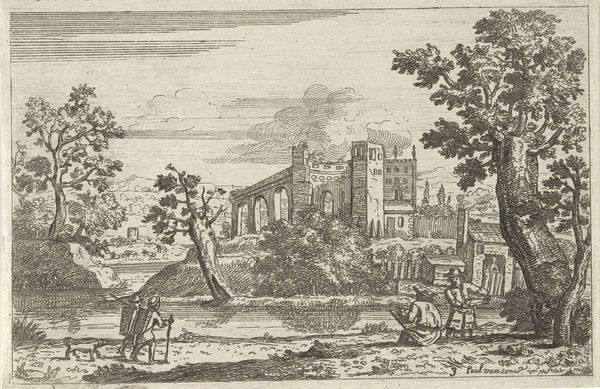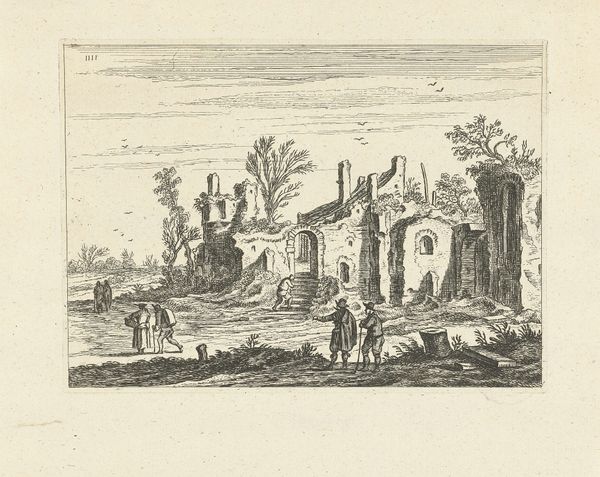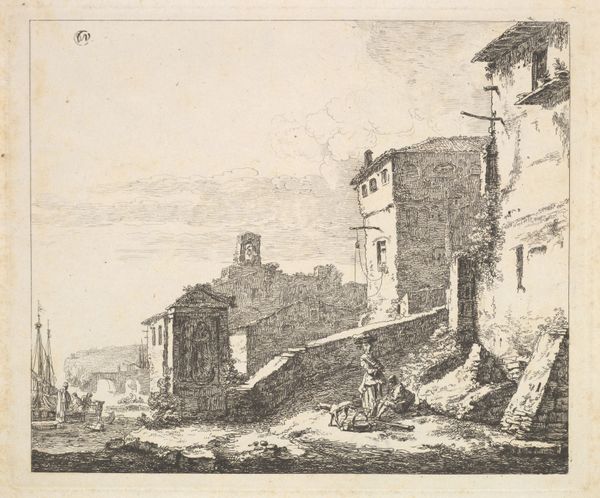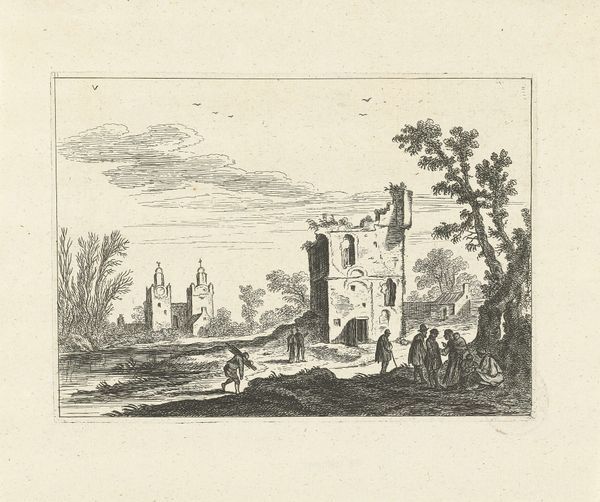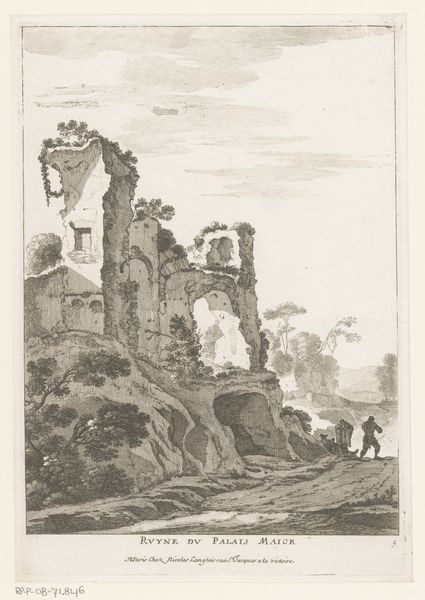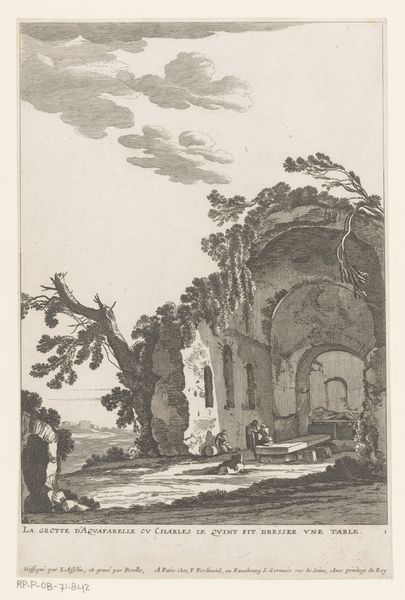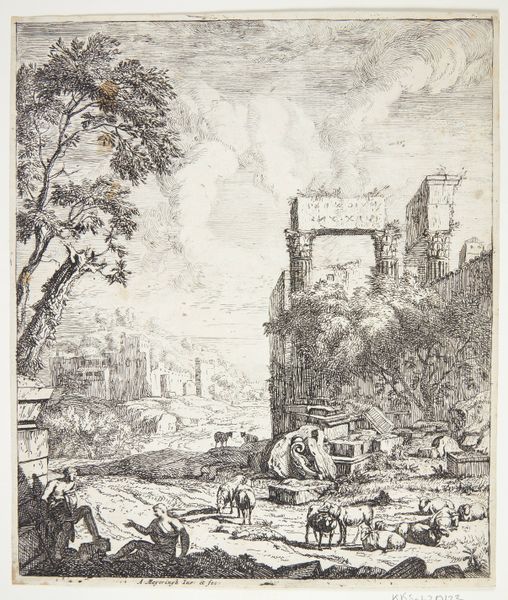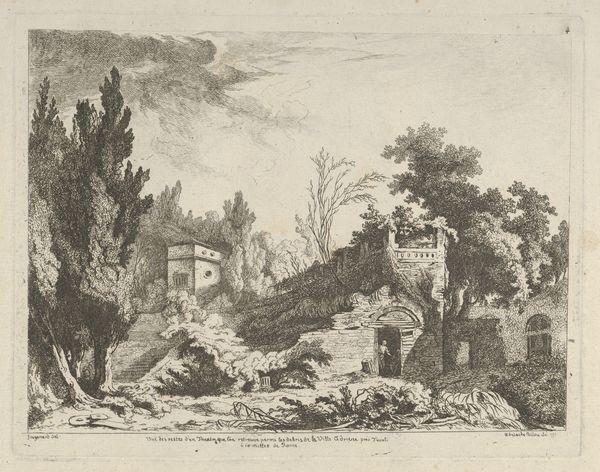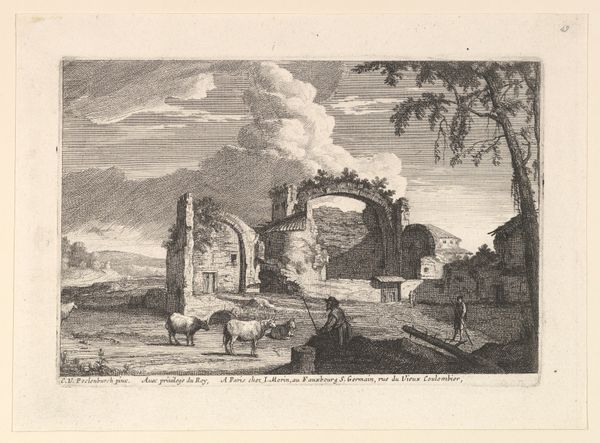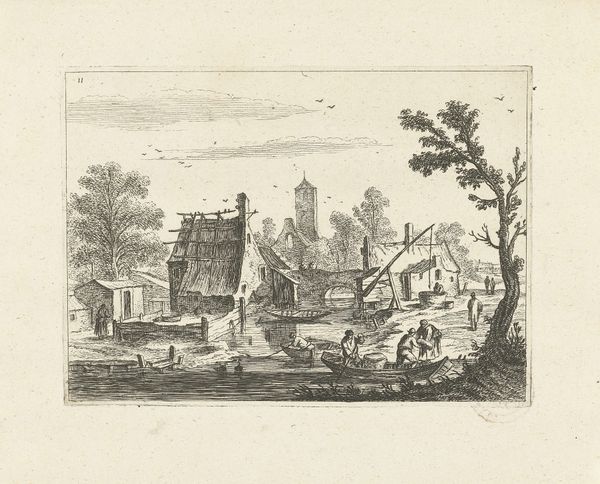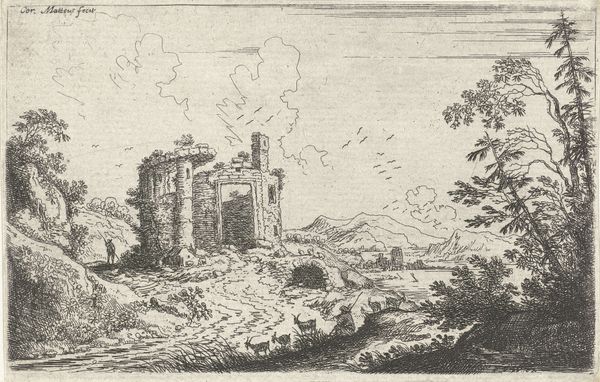
print, etching
#
baroque
#
dutch-golden-age
# print
#
etching
#
landscape
#
cityscape
Dimensions: 273 mm (height) x 230 mm (width) (bladmaal)
Herman Saftleven created this etching of the Wittevrouwenpoort in Utrecht in 1645. At first glance, it appears to be a straightforward depiction of a city gate. But look closer: the gate itself, a symbol of security and separation, stands amidst water. Water, often a symbol of the subconscious, surrounds the structure, blurring the lines between the tangible and the intangible. This motif of architecture reflected in water recalls the classical myth of Narcissus, who became so fixated on his reflection that he lost himself entirely. We see this symbolic blurring repeated throughout art history: from ancient Roman mosaics depicting watery paradises to later Pre-Raphaelite paintings of Ophelia's tragic drowning. Consider how the subconscious appeal of these images lies in their ability to evoke profound emotions and tap into our collective memories. The image of the gate—or any threshold—has been a focal point in art throughout time, appearing as a reminder of life's transitions in varied cultural and historical circumstances. The reflection in the water adds a cyclical dimension, emphasizing that the motifs of transition are ever-present.
Comments
No comments
Be the first to comment and join the conversation on the ultimate creative platform.

